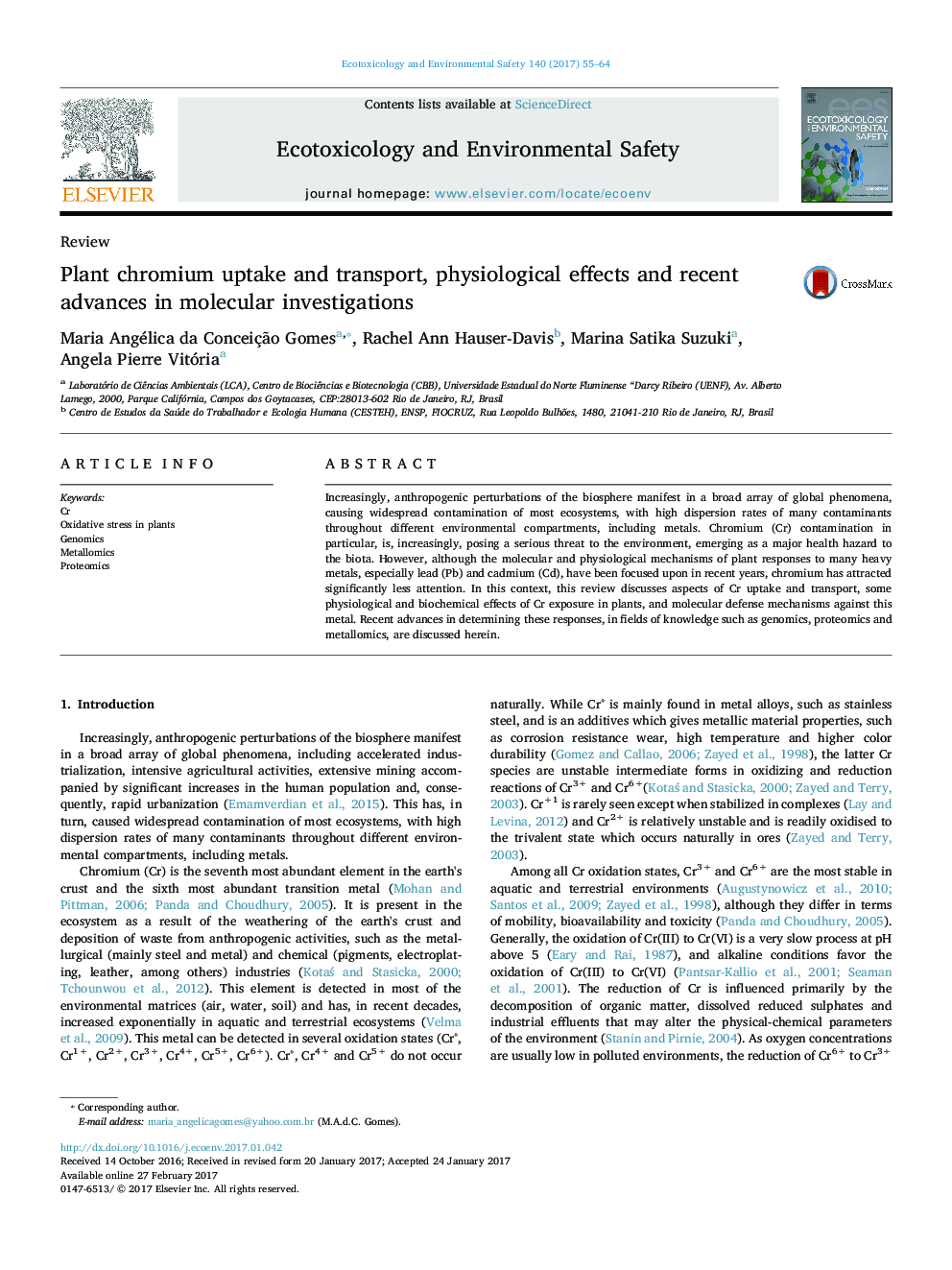| Article ID | Journal | Published Year | Pages | File Type |
|---|---|---|---|---|
| 5747689 | Ecotoxicology and Environmental Safety | 2017 | 10 Pages |
â¢Cr can harm plant germination, photosynthesis, nutrition and cause oxidative stress.â¢Recent advances in 'omics fields have shed new light on plant defense strategies.â¢Cr affects Cr-responsive microRNAs, DNA methylation and the transcriptome.â¢Proteins and metalloproteins are now being identified as Cr exposure biomarkers.â¢'Omics will, increasingly, lead to deeper insights regarding Cr effects on plants.
Increasingly, anthropogenic perturbations of the biosphere manifest in a broad array of global phenomena, causing widespread contamination of most ecosystems, with high dispersion rates of many contaminants throughout different environmental compartments, including metals. Chromium (Cr) contamination in particular, is, increasingly, posing a serious threat to the environment, emerging as a major health hazard to the biota. However, although the molecular and physiological mechanisms of plant responses to many heavy metals, especially lead (Pb) and cadmium (Cd), have been focused upon in recent years, chromium has attracted significantly less attention. In this context, this review discusses aspects of Cr uptake and transport, some physiological and biochemical effects of Cr exposure in plants, and molecular defense mechanisms against this metal. Recent advances in determining these responses, in fields of knowledge such as genomics, proteomics and metallomics, are discussed herein.
